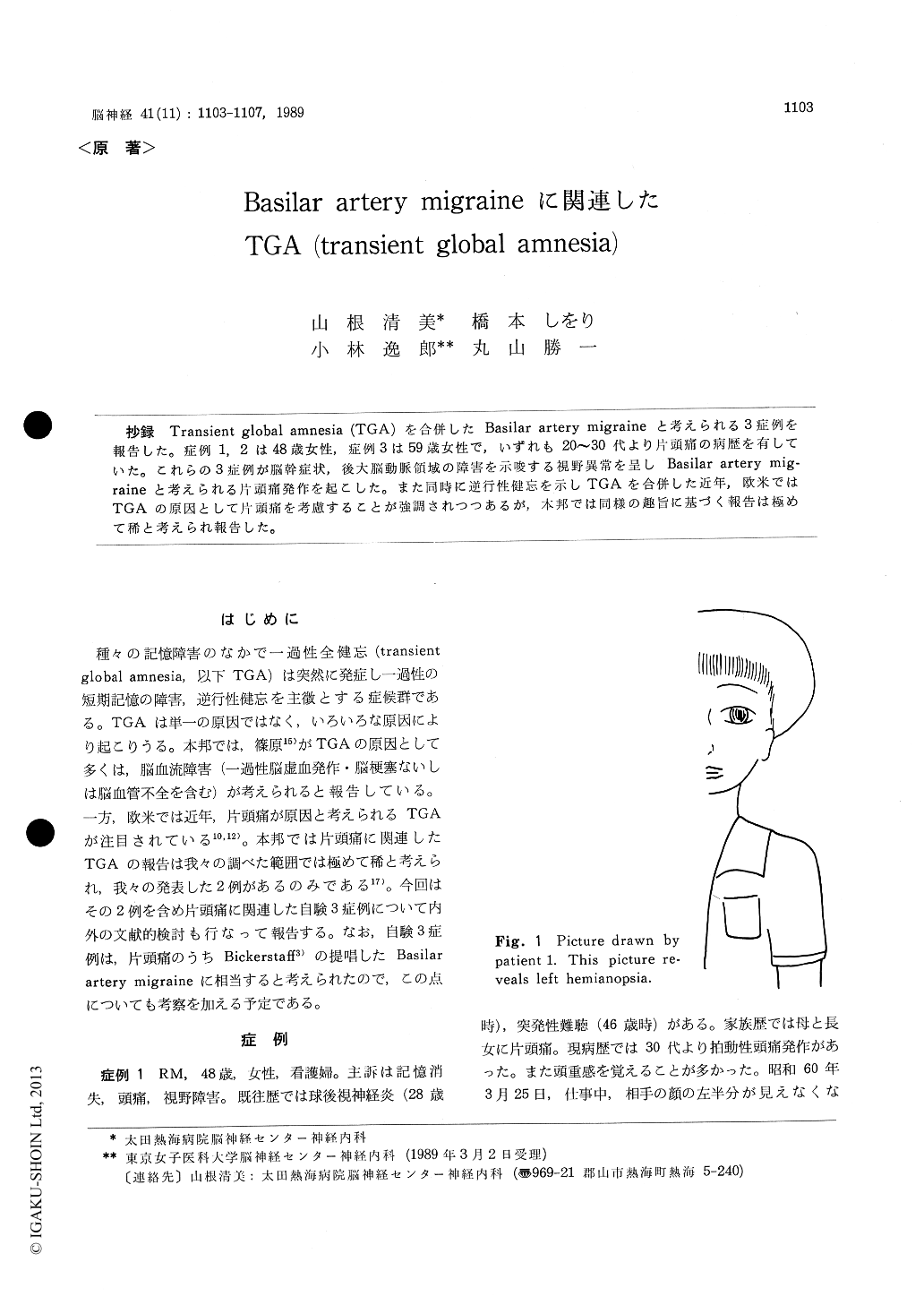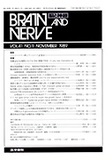Japanese
English
- 有料閲覧
- Abstract 文献概要
- 1ページ目 Look Inside
抄録 Transient global amnesia (TGA)を合併したBasilar artery migraineと考えられる3症例を報告した。症例1,2は48歳女性,症例3は59歳女性で,いずれも20〜30代より片頭痛の病歴を有していた。これらの3症例が脳幹症状,後大脳動脈領域の障害を示唆する視野異常を呈しBasilar artery mig-raineと考えられる片頭痛発作を起こした。また同時に逆行性健忘を示しTGAを合併した近年,欧米ではTGAの原因として片頭痛を考慮することが強調されつつあるが,本邦では同様の趣旨に基づく報告は極めて稀と考えられ報告した。
Transient global amnesia (TGA) is an unusual form of the amnestic syndrome, clinically charac-terized by profound disturbance of short-term memory with preservation of immediate recall and long-term memory. Spontaneous recovery is the rule and is usually complete within several hours. The etiology of TGA is not clear. It is con-sidered to be caused by transient ischemia confined to the medial temporal lobe, an area supplied by branches of the vertebrobasilar system.
Basilar artery migraine is a well-known syn-drome, first discribed by Bickerstaff. Besides pul-sating headache, the dominant symptoms are ver-tigo, ataxic gait, tinnitus, dysarthria, paraeshesia in the hands, homonymous hemianopsia and some-times drop-attacks. These symptoms are associated with vertebrobasillar system dysfuncton.
In this paper, three migraine patients, suffering from one episode of TGA, were reported. All patients were women. Case 1 was a 48-year-old woman with a history of common migraine. Case 2 was a 48-year-old woman with a history of classic migraine. Case 3 was a 59-year-old woman with a common migraine. Family history of migraine exists in case 1 and case 3. Their migrainous attacks began in their twenties and thirties.
They suddenly suffered migraine with the symp-toms of vertebrobasilar dysfunction. These symp-tomes are ataxic gait (Case 1, 2, 3), dysarthria (Case 1, 2), vertigo (Case 1, 3) and homonymous hemianopsia (Case 1, 3). Simultaneously three patients had TGA. Duration of retrograde amnesia were about twenty-four hours (Case 1), about thirty minutes (Case 2) and about three hours (Case 3). The clinical feature of the three migraine patients were considered to have basilar artery migraine with TGA. Brain CT scan were normal in all three patients. EEG of case 1 showed slow waves evoked by photic stimulation. EEG of case 1 and 2 showed normal findings. Single photon emission CT with 123-IMP carried out in case 2 was nor-mal.
TGA has been described in association withvarious diseases including brain tumor, temporal arteritis, polycythemia, head trauma, EB virus encephalitis and hypoglycemia. The most fre-quently proposed causes of TGA are cerebrovascu-lar (ischemic) and epileptogenic. Recently TGA has been reported to occur under circumstances suggesting migrainous process and stressed to have a history of migraine in Europe and America. In Japan, TGA associated with migraine is thought to have been very rarely reported. We have to investigate further the association between TGA and migraine.

Copyright © 1989, Igaku-Shoin Ltd. All rights reserved.


